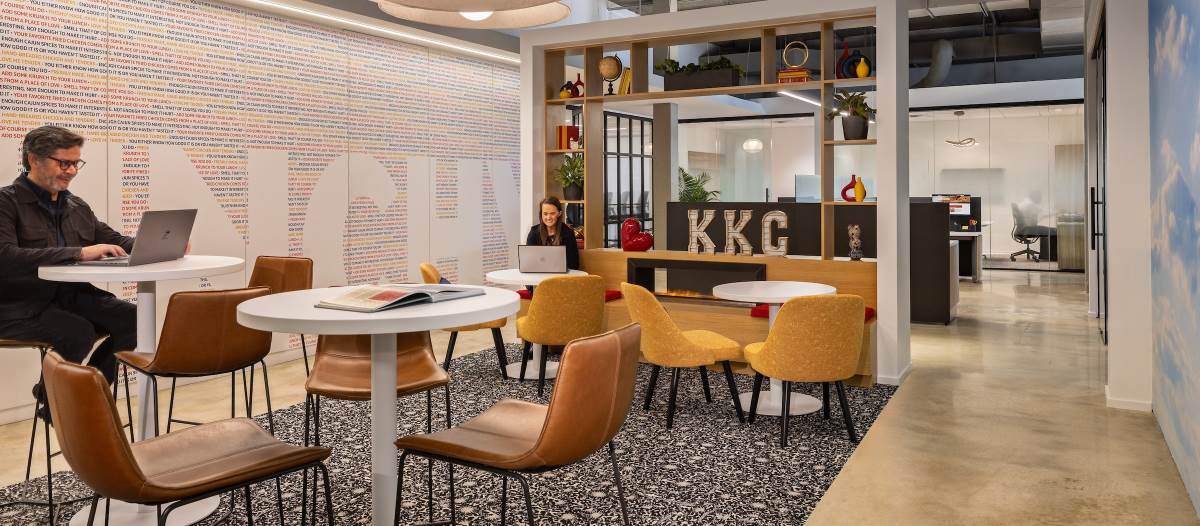All the Comforts of Work
Boosting employee engagement through ergonomic spaces

Employee engagement is the measure of how emotionally committed employees are to their work, which directly correlates with productivity, creativity and overall job satisfaction. However, modern workplaces are increasingly battling a silent productivity killer: employee burnout. This challenge became more prevalent when companies began shifting to virtual and hybrid operations. The blurring lines between employees’ personal spaces and work offices have made it even more tricky to achieve that work-life harmony everyone thought would be at arm’s reach from embracing the work-at-home setup.
Additionally, the modern hustle culture — which glorifies overwork at the expense of personal well-being —has contributed to a dramatic rise in mental and physical exhaustion, often manifesting as disengagement, increased absenteeism and a higher risk of health problems.
The solution to these growing concerns lies in an often overlooked yet incredibly impactful aspect: ergonomic workspaces. Creating environments that prioritize physical comfort and well-being can help companies mitigate the risk of burnout, achieve higher attendance scores and a more engaged, energized workforce.
Ergonomic workspaces prevent burnout
According to a 2024 report from Glassdoor, reviews mentioning employee burnout surged to the highest levels since tracking began in 2016, marking a 44 percent increase since February 2020. The constant pressure to be productive, combined with long hours spent in poorly designed work environments, exacerbates this problem.
Hustle culture has proven to be unsustainable. Prolonged periods of physical discomfort caused by subpar office furniture — such as nonergonomic chairs, desks and workstations — further intensify the mental strain. Over time, this leads to chronic health issues such as joint pain, back problems, vision fatigue and even heart disease. Employees are left feeling physically drained, mentally exhausted and emotionally detached from their work, ultimately resulting in disengagement.
Ergonomic workspaces serve as a preventive measure against this cycle of burnout. Well-designed office furniture and equipment are tools that foster well-being. Chairs that provide proper lumbar support, desks that adjust to the height of the worker and monitors positioned at eye level all contribute to a significant reduction in physical discomfort. When employees feel physically supported, they are less likely to experience fatigue, allowing them to remain mentally sharp and engaged throughout the workday.
Additionally, ergonomics can be seen as part of a broader approach to well-being. When employees are not distracted by physical pain or discomfort, they are more likely to maintain focus on their tasks, feel valued by their employer and enjoy a higher quality of work life. As a result, burnout is less likely to take root.
Invest in the future: Long-term savings & morale boost
The upfront cost of ergonomic furniture and equipment may seem significant at first glance. However, when viewed as a long-term investment, the benefits far outweigh the initial expenditure. Businesses that prioritize ergonomics not only reduce health care costs but also experience a notable increase in team spirit, loyalty and satisfaction.
The rise in sick days since 2019 is a striking example of the financial toll employee disengagement and burnout can take on an organization. On average, businesses are losing $4,080 per full-time employee and US$2,040 per part-time worker annually due to absenteeism. This does not factor in the hidden costs of reduced and compromised productivity, low morale and high employee turnover, all of which can be significantly mitigated with the proper ergonomic interventions.
Ergonomic furniture, such as height-adjustable desks, chairs with customizable lumbar support and wrist-friendly keyboard setups, can prevent a range of health issues. Chronic back and neck pain, wrist strain and vision problems, common ailments in office environments, are significantly reduced when employees are provided with workstations designed for comfort and functionality. By alleviating these issues, companies are likely to see a reduction in sick days, lower health care expenses and a boost in employee engagement.
When employees are aware that their employer has invested in their health and well-being, they are more likely to feel valued and accomplish tasks more efficiently. Remember that workers who feel supported by their environment and management will reciprocate by putting in the effort to contribute to the company's success.
Aside from preventing pain, ergonomic furniture and tools contribute to a positive, supportive workplace culture. The increased motivation that results from an ergonomic investment makes it clear that these measures pay off in the long run, benefiting both employees and employers.
Increase productivity to reduce absenteeism
Absenteeism is a major challenge in today’s workforce, even when most jobs have already adopted the work-from-home setup. Its financial and productivity-related impacts are also difficult to ignore. Yet, one of the most effective solutions lies in something as simple as improving the ergonomic design of the workspace or at least providing employees with the resources to design their own ergonomic workstations.
Workplace productivity often declines when employees are distracted by physical discomfort. The seemingly minor issues relating to comfortability can compound into serious distractions. Moreover, chronic discomfort eventually leads to higher levels of stress, which increases the likelihood of absenteeism.
In contrast, employees working in ergonomically sound environments are more focused and less stressed. When workers have the tools and resources to maintain a comfortable, pain-free posture throughout the day, their mental clarity and stamina improve. This boost in productivity is not only a benefit for individual employees but also for the entire organization. Engaged employees are more likely to stay loyal to their company, reducing turnover and the need for costly recruitment and retraining.
A well-designed workspace also signals to employees that their health is a priority, which fosters a sense of trust and commitment to the company. Workers who feel physically supported by their environment are less likely to take sick days or call in because of stress or fatigue. In some instances, just the thought of working in an uncomfortable workstation feels dreadful to employees. This mindfulness and consideration result in a more stable, reliable workforce, with fewer absences and more consistent levels of output.
Tools of the trade: Key ergonomic interventions
To build ergonomic workspaces that prevent injuries and keep employees comfortable, it is essential to start by identifying more potential issues. Reviewing data from OSHA 300 logs, workers’ compensation records and employee feedback can help highlight areas where ergonomic risks are present. Observing how workers operate in real-time — whether they are changing their tools or shaking their arms — can provide critical insights into the conditions that may lead to musculoskeletal disorders (MSDs).
Ergonomic risks are often tied to repetitive motions, awkward postures and exposure to cold. Addressing these risks early is key to creating a safer and more productive workplace. By conducting an ergonomic job hazard analysis, businesses can pinpoint where improvements can be made, whether through better tools, redesigned tasks or adjustments to the workspace environment.
The tools that create ergonomic workspaces are simple but effective. Desks that are height-adjustable allow employees to shift between sitting and standing throughout the day, reducing the strain that long periods of sitting place on the spine and muscles. Chairs with customizable lumbar support ensure that employees maintain proper posture, preventing back and neck pain. Monitors should be positioned at eye level to avoid unnecessary strain on the neck, while the use of a keyboard and mouse designed to reduce wrist strain is essential for preventing repetitive stress injuries like carpal tunnel syndrome.
Even lighting can play a role in ergonomics, as well-placed light sources reduce eye strain and prevent headaches. These ergonomic interventions, combined with careful analysis of workplace conditions, ensure that employees maintain a comfortable, healthy posture throughout the day. Over time, this reduces the likelihood of chronic health issues, increases job satisfaction and lowers attrition rates.
A holistic approach to well-being and engagement
While physical comfort is a critical aspect of ergonomics, it is only one piece of the puzzle. A well-rounded approach to employee engagement through ergonomics also recognizes the importance of mental and emotional well-being. This holistic approach views the workspace as an environment where employees can thrive, free from both physical discomfort and the mental strain caused by burnout and disengagement.
Companies that invest in ergonomic workspaces are, in essence, making a commitment to their employees’ long-term health and success. In doing so, they not only boost engagement and productivity but also create a work environment where employees are motivated to contribute their best efforts and, most importantly, do not dread the thought of work. The benefits of such an approach encompass reduced absenteeism, lower health care costs, higher morale and a more engaged workforce.

Annie Potter is the chief marketing officer at VersaDesk. With more than 15 years of experience in marketing and ecommerce, Potter is a seasoned leader known for her expertise in brand building, program development, operations and strategic management across a wide range of industries.
Read more on Workplace , Occupancy & Human Factors and Emerging Topics
Explore All FMJ Topics









